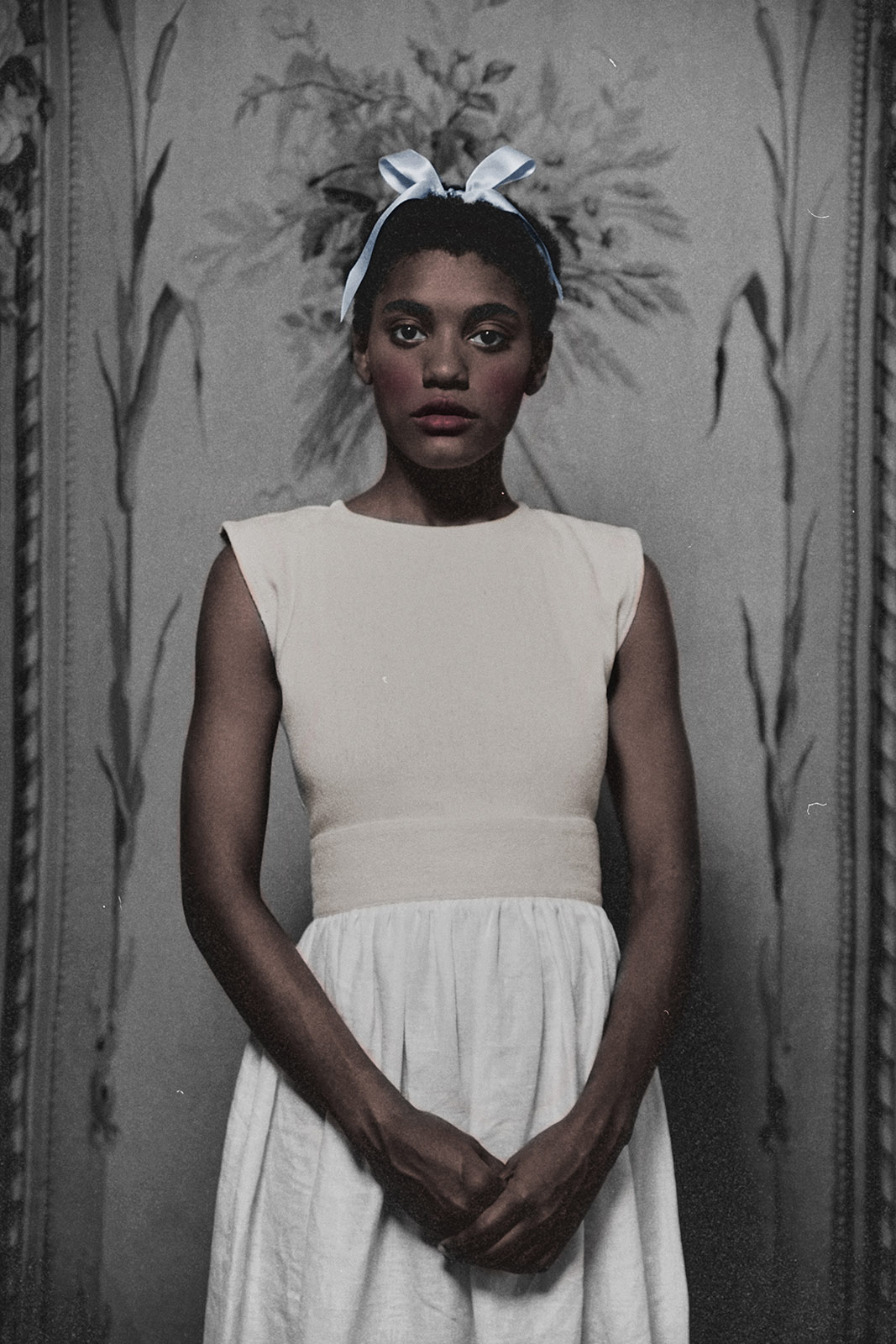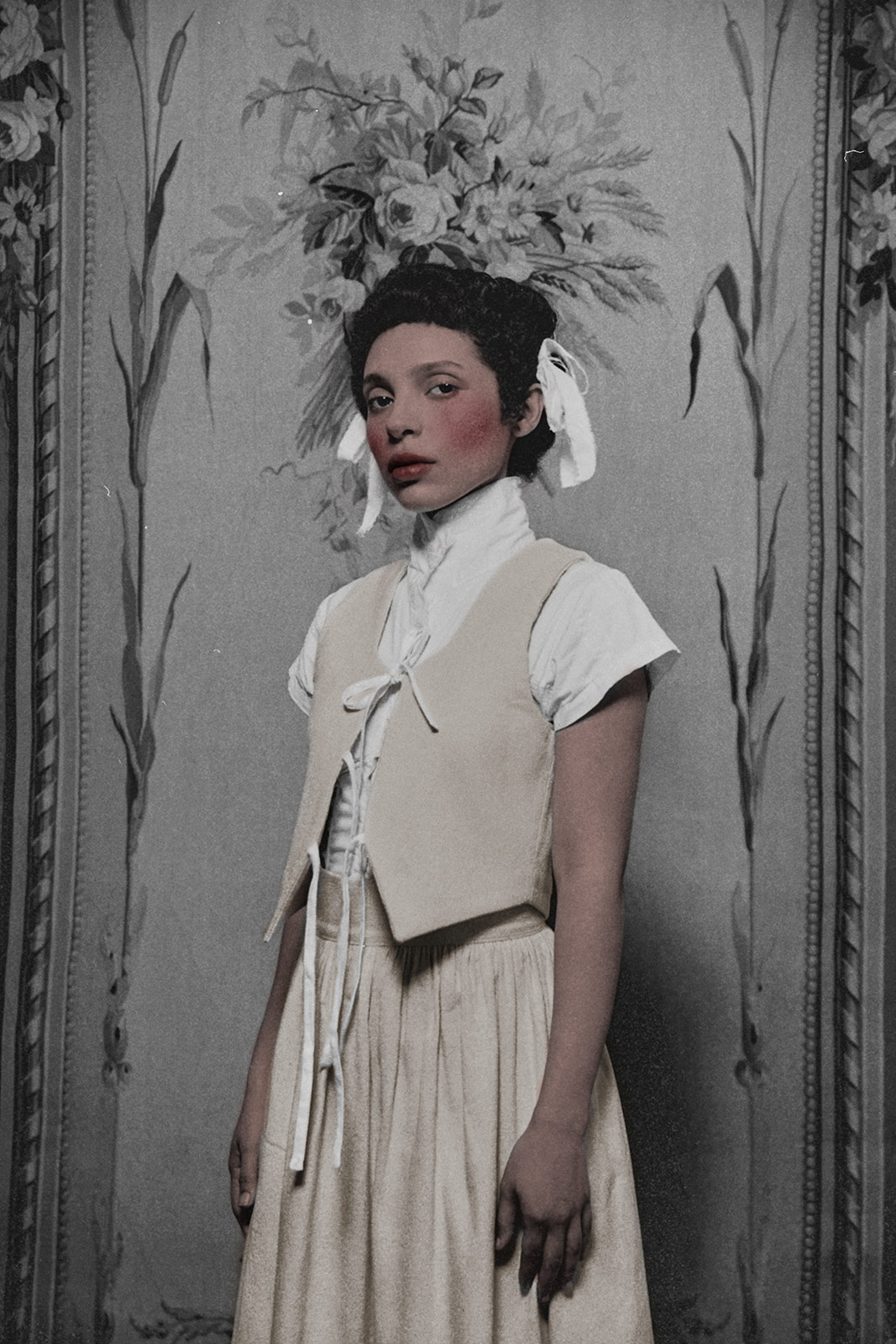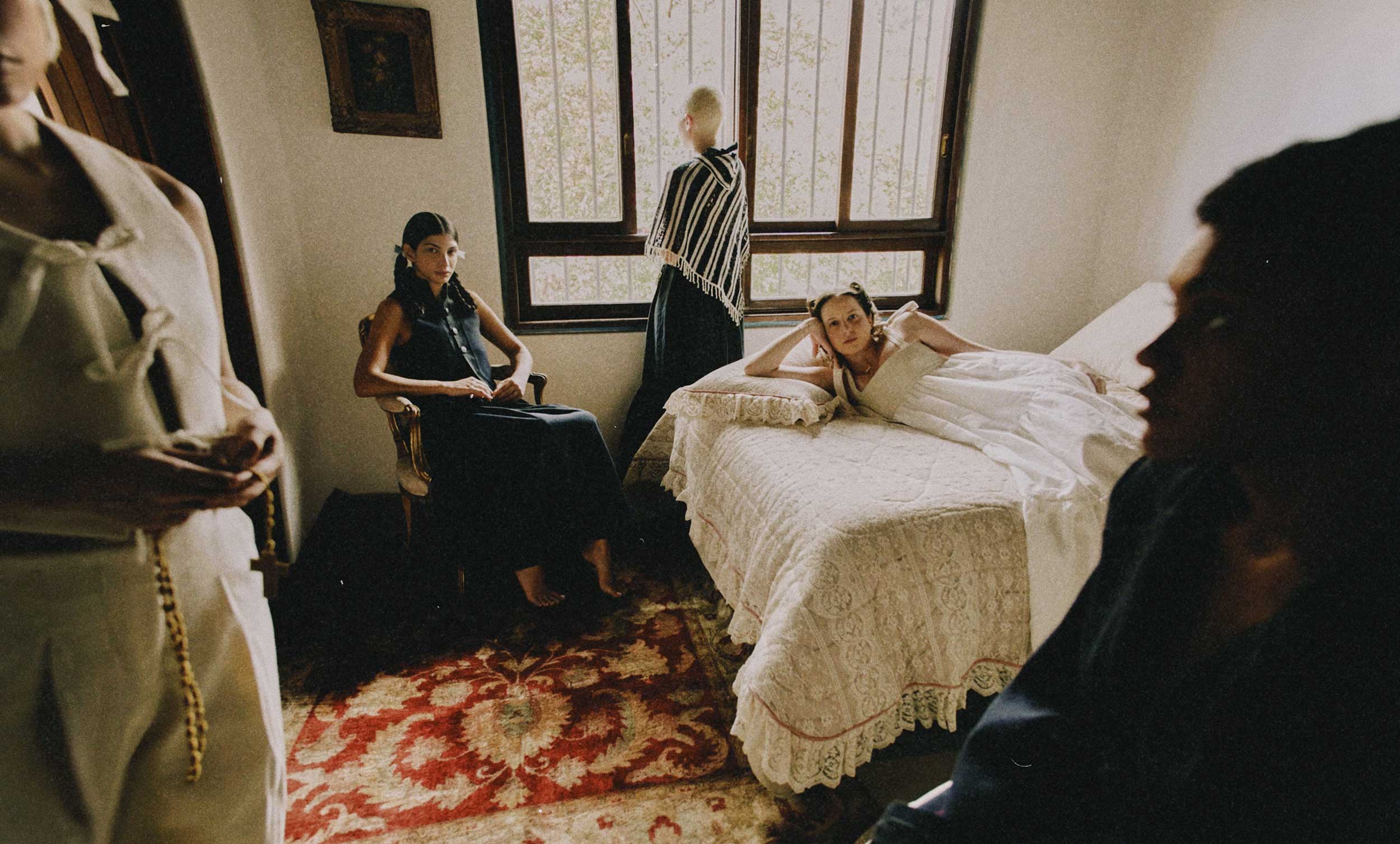Designer Patricia Maria Pietri sits down with Document to discuss the family, folklore, and fantasy in her contemporary womenswear brand
Looking at Costaiia, designer Patricia Maria Pietri’s made-to-order clothing brand, Chavela Vargas comes to mind. The singer’s vaulting voice carries on the canción ranchera tradition as Pietri’s puffed sleeves and tiered skirts do with artisanal textile techniques. Inspired by the myths and fables of shared Latin American experience, Costaiia’s story is folkloric itself.
Pietri moved from Miami to Mexico City with the idea to start a clothing brand rooted in Indigenous practices. Walking through Xochimilco, a neighborhood known for its textile craftsmanship, she literally followed her ear, searching for the sound of a loom. The thwack of a shuttlecock brought her to Javier, the man behind the weaving machine. Over mezcal, he and his brothers agreed to produce 10 meters of fabric for Pietri, and so began their working relationship (they now happen to be great friends as well as coworkers).
Costaiia represents a portal into Pietri’s sartorial world, an aesthetic somewhere between La Llorona and a first communion dress. The brand tells a story of Latin America, from the region’s many Indigenous customs to today’s Catholic ceremonies. Pietri thinks in terms of characters: What would a girl in the ’30s wear to her grandmother’s birthday party in Mexico? How did ancient peoples celebrate the rain or the birth of a new child before los conquistadores? A Costaiia dress is built on considering the answers.
Maya Kotomori: What was the inception of Costaiia?
Patricia Maria Pietri: I never thought I would go into fashion, actually! That was never my intention. I started Costaiia in the pandemic, really thinking about what I wanted to do with my life. I was working in production, doing videos for brands in Miami. I was producing these very superficial videos that all felt the same, but I also saw how a brand could create an entire world. I saw the potential of what a brand could be, and got into fashion so I could try and create that.
I decided to move to Mexico that year. I was always interested in garment practices from Indigenous communities, so Costaiia was really an outlet for me to learn. The brand started very organically. It started with me walking through Xochimilco—a place with a history of family-owned textile artisans—and following my ear, trying to see if I could hear a loom, or a sound that could lead me to someone I could work with. I had never sewn anything in my life, never done pattern work. I would work with the artisans making the textiles, making the buttons, making the materials that were going to be turned into a dress, and then go to my atelier like, Can you teach me how to make a dress? It was a personal project that eventually turned into my own little world.
Maya: What would you say is the key theme of the Costaiia world?
Patricia: I think that it revolves around sisterhood. Everything that I’m interested in is about creating a family. Being an immigrant from Venezuela, I came to Mexico just knowing my boyfriend, and having to create that family from scratch. The stories I want to tell are of sisterhood and family and creating a community.
Maya: Do you have a sister?
Patricia: I do! It’s funny because my sister and I aren’t really the sister type. She’s more like another mother to me. She’s incredible. I also have two little brothers, so family has always been important to me, and my dad has 13 siblings, so I grew up with so many cousins. Coming from such a big family to just me, my boyfriend, and my dog was shocking, almost.
Maya: Are there any garments you’ve designed specifically inspired by a family member?
Patricia: I feel like my grandmother inspired my whole new collection. It’s called Quinta Ana Maria, which is her house. Venezuela houses, quintas, have names like that. I shot the campaign at her house, and the clothing is inspired by her dresses from childhood. I grew up going to her house so much that I call it my house. She’s always been a very important figure for my sense of creativity. If I had to choose a garment to represent her, it would be the Maria dress, which is a very pure feminine piece that I call the First Communion dress.
Maya: The concept of matrilineage is very present in the collection just through the styling. Before entering the industry, did you always have a strong relationship to clothing and personal style?
Patricia: I actually wasn’t interested in clothing until about five years ago. I remember all my friends who worked in fashion would laugh at me because I was always like, How can you work in such a frivolous industry? I don’t get it! And then I started producing videos and editorial brands for fashion brands, and I saw how fashion became this portal into creating characters. I’ve always loved film and through fashion, you can build entire worlds. When I would help create characters [for brands], I would always think, Okay, who are they? Where are they going? What are they wearing?
That’s really how it started: understanding that fashion was a way for these characters to live outside a photograph or a video. Thinking about that made me ask what a person would feel like wearing a dress I created.
Maya: Is fantasy or personal style more important for you when designing for Costaiia?
Patricia: Fantasy, for sure. I’m much more punk than Costaiia! It’s funny, every time I wear Costaiia, I feel like I’m in that fairy land I created—but I don’t feel like myself. It’s definitely a part of me, just a part of me that isn’t how I dress myself on a day-to-day. Normally I’m in black cargo pants, not a tiered white dress.
Maya: Yes, fashion and personal style are different things: Fashion is the character in the fantasy, and personal style is how you express yourself, but tempered by your lifestyle. In that sense, would you consider fashion an art form? Why or why not?
Patricia: I do consider it an art form, because everything that goes into creating a garment is art. The craftsmanship, everything. And before that stage, just the creative process behind each piece. More than that, after the garment is created, the person wearing it is going to create their own stories in that thing you made—that’s an art form too, in a way.
“The thing that makes its way into every city in Latin America, I think, is horror folklore… I think that the eerie aspect of folklore definitely makes its way into how I see Costaiia. You know, it can be this beautiful girl in a white dress, but I want to make her a little creepy.”
Maya: You mention myths and folklore as a major inspiration for the clothing you make. What are some of your favorite tales to use in your design process?
Patricia: I’m definitely inspired by the horror aspect of folklore because it’s had such an impact on my life. Growing up, I felt that Caracas was a place that didn’t really have a lot of deep culture, because it was a [relatively] new city. You would leave Caracas and go to the coast and they had a lot of culture and stories passed down from generations and things like that. But the thing that makes its way into every city in Latin America, I think, is horror folklore. And the tradition of telling kids, like, Be good, or La Llorona is gonna take you and kill you! That’s something I don’t just remember hearing from my parents, but something that, in our [Latin American] culture, we’d hear at sleepovers. You wanted to talk about el silbon and La Llorona and be spooked together with your girlfriends. I was always horrified by that, so I think that the eerie aspect of folklore definitely makes its way into how I see Costaiia. You know, it can be this beautiful girl in a white dress, but I want to make her a little creepy.
Maya: I’m thinking about this idea of Indigeneity, and how the impact of the conquistadors in Mexico created what is now a largely Catholic nation through force. But there’s a beauty in the uniquely Mexican interpretation of Catholicism today, even though it historically is based on forced conversion from Indigenous forms of religion. I’m wondering how you see all this history together with the shared Latin American folklore experience you shared?
Patricia: Mexico is really interesting in that way because of that history, but today Catholicism has become a symbol for identity. My mom is super Catholic and she would never understand la fiestas paganas as just colonizer things. These parties each celebrate Christ, but they’re celebrating Christ in a way that holds on to culture in a really specific way. The masks, the dancing—a lot of these traditions come from the past. Colonization took a lot and there’s still cultural identities that came out of that.
Maya: Tell me about Javier and his family, and how you learned the textile techniques that go into your clothing.
Patricia: I think I met him two years into the brand. I was in Xochimilco working with another family at the time, and I walked by his house and heard a loom. I wasn’t really looking for new textiles, but I knocked on his door anyway. He opened the door drunk and shirtless, with a whole bunch of other shirtless men. And I was like, ‘Hey! What are you doing?’ and he was, like ‘Oh, just this fabric thing, I don’t know.’ I felt the textile he was working on and fell in love with it. I was like, This is a pant fabric. I remember just talking to him for about half an hour over mezcal he offered me. The culture is very machista, so it’s not an instinct for men to open up to a woman super easily. I initially got laughs, and then I asked them, ‘Can you make 10 meters of this fabric for me in this color?’ I was not expecting them to say yes, but they did. I gave them my phone number, and two days later they had it ready.
I live in Mexico City, so I would go visit them every three months to sort out production things like experimenting with colorways. I think it took three visits before they started opening up to me, and we just bonded. Javier and his brothers are all from 70 to 85—Javier is 79 years old, and he learned how to work the loom when he was eight. He and his brothers are the last textile artisans in their family lineage of five generations because their kids didn’t learn how to work the loom. So that craftsmanship is probably going to end when they go, which breaks my heart.
Maya: In a way it’s beautiful though, because their family becomes a part of your oral traditions.
Patricia: I really think Javier will outlive his father who’s almost 100 years old. He’s gonna live to 100 and then some.

























